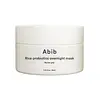What's inside
What's inside
 Key Ingredients
Key Ingredients

 Benefits
Benefits

 Ingredients Side-by-side
Ingredients Side-by-side

Water
Skin ConditioningDipropylene Glycol
HumectantGlycerin
HumectantGlyceryl Polymethacrylate
Lactobacillus/Rice Ferment
Skin Conditioning1,2-Hexanediol
Skin ConditioningDiglycerin
HumectantAmmonium Acryloyldimethyltaurate/Vp Copolymer
Oryza Sativa Bran Extract
Skin ConditioningAcrylates/C10-30 Alkyl Acrylate Crosspolymer
Emulsion StabilisingTromethamine
BufferingSaccharomyces/Rice Bran Ferment
HumectantEthylhexylglycerin
Skin ConditioningAdenosine
Skin ConditioningSodium Hyaluronate
HumectantAllantoin
Skin ConditioningDisodium EDTA
Water, Dipropylene Glycol, Glycerin, Glyceryl Polymethacrylate, Lactobacillus/Rice Ferment, 1,2-Hexanediol, Diglycerin, Ammonium Acryloyldimethyltaurate/Vp Copolymer, Oryza Sativa Bran Extract, Acrylates/C10-30 Alkyl Acrylate Crosspolymer, Tromethamine, Saccharomyces/Rice Bran Ferment, Ethylhexylglycerin, Adenosine, Sodium Hyaluronate, Allantoin, Disodium EDTA
Water
Skin ConditioningCaprylic/Capric Triglyceride
MaskingDicaprylyl Carbonate
EmollientGlycerin
HumectantGlyceryl Oleate Citrate
EmulsifyingPhenoxyethanol
PreservativeCaprylyl Glycol
EmollientTasmannia Lanceolata Fruit/Leaf Extract
AntioxidantLactobacillus Lysate
AntimicrobialSimmondsia Chinensis Seed Oil
EmollientVitis Vinifera Seed Oil
EmollientPolyacrylate Crosspolymer-6
Emulsion StabilisingButylene Glycol
HumectantSodium Citrate
BufferingCI 14815
Cosmetic ColorantWater, Caprylic/Capric Triglyceride, Dicaprylyl Carbonate, Glycerin, Glyceryl Oleate Citrate, Phenoxyethanol, Caprylyl Glycol, Tasmannia Lanceolata Fruit/Leaf Extract, Lactobacillus Lysate, Simmondsia Chinensis Seed Oil, Vitis Vinifera Seed Oil, Polyacrylate Crosspolymer-6, Butylene Glycol, Sodium Citrate, CI 14815
 Reviews
Reviews

Ingredients Explained
These ingredients are found in both products.
Ingredients higher up in an ingredient list are typically present in a larger amount.
Glycerin is already naturally found in your skin. It helps moisturize and protect your skin.
A study from 2016 found glycerin to be more effective as a humectant than AHAs and hyaluronic acid.
As a humectant, it helps the skin stay hydrated by pulling moisture to your skin. The low molecular weight of glycerin allows it to pull moisture into the deeper layers of your skin.
Hydrated skin improves your skin barrier; Your skin barrier helps protect against irritants and bacteria.
Glycerin has also been found to have antimicrobial and antiviral properties. Due to these properties, glycerin is often used in wound and burn treatments.
In cosmetics, glycerin is usually derived from plants such as soybean or palm. However, it can also be sourced from animals, such as tallow or animal fat.
This ingredient is organic, colorless, odorless, and non-toxic.
Glycerin is the name for this ingredient in American English. British English uses Glycerol/Glycerine.
Learn more about GlycerinWater. It's the most common cosmetic ingredient of all. You'll usually see it at the top of ingredient lists, meaning that it makes up the largest part of the product.
So why is it so popular? Water most often acts as a solvent - this means that it helps dissolve other ingredients into the formulation.
You'll also recognize water as that liquid we all need to stay alive. If you see this, drink a glass of water. Stay hydrated!
Learn more about Water